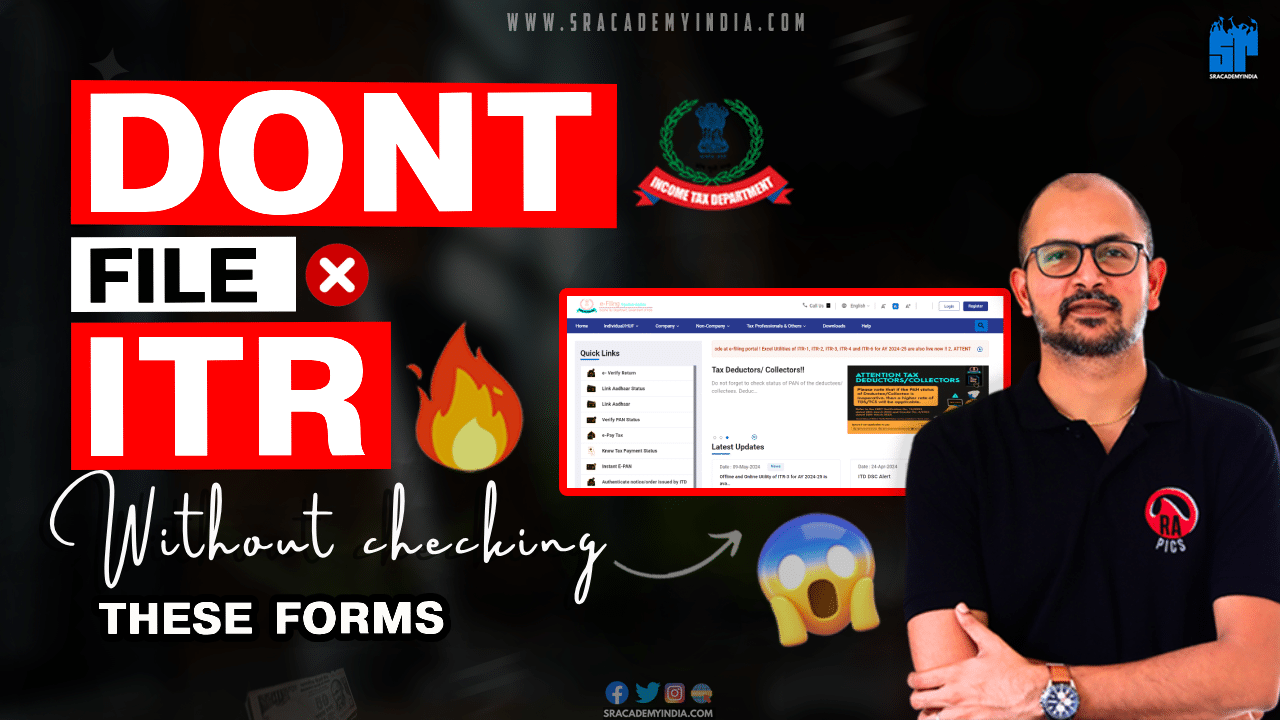Documents required for ITR Filing
Introduction
ITR filing is an important exercise that every individual has to undertake soon after the closing of the financial year. Though ITR filing is not mandatory for everyone, one needs to check the ITR filing criteria each year to see whether they are covered under mandatory filing or not.
For those covered under this criteria, before filing their ITR they need to check the 2 most important documents required for ITR filing, which play a major role. They are: Form-26AS & Annual Information Statement (AIS).
In this article, let’s discuss the role of these 2 documents in ITR filing. But before that let’s understand some basics about Income Tax Return (ITR) filing.
What is ITR
Income Tax Return (ITR) is a form through which we communicate our income or loss details of a particular financial year and taxes paid on such income to the Income Tax Department.
Depending on the nature of income & category of an assessee, different types of ITR forms are prescribed by the department. Anyway, we are not going in-depth regarding ITR forms here, we will discuss it in another article.
For whom ITR filing is mandatory
ITR filing is not mandatory for everyone. Sec 139(1) of the Income Tax Act specified some criteria for ITR filing. Anyone who falls under this criteria needs to mandatorily file their ITR. For those who do not fall under these criteria, they may file their ITR voluntarily.
As per sec 139(1) of the Income Tax Act, Individuals (including NRI) who fall under either of the criteria mentioned below need to file their ITR mandatorily.
- Income criteria
- Expenditure criteria
Whereas, Resident and Ordinarily Residents (RONR) should also watch out for one more criterion (i.e. Additional criteria), in addition to the above two criteria. Meaning, that for RONR ITR filing is mandatory if it falls under either of the three criteria.
Read our detailed article on ITR filing here: Is it mandatory to file an ITR?
Documents required for ITR Filing
Since the list of documents that are required for ITR Filing is unlimited, we will limit our focus only to 2 forms i.e. Form-26AS & AIS. These two documents can be accessed from the Income Tax Portal online
Form-26AS
It is a Tax Credit statement of an assessee which reflects all financial information related to each and every financial year. But with the introduction of the Annual Information Statement (AIS), from FY 2022-23 onwards Form-26AS only discloses TDS and TCS related information.
Annual Information Statement (AIS)
Though it was originally introduced in Budget 2020 (check year), it became quite effective from FY 2022-23 when it started reflecting entire financial information related to a taxpayer for the respective financial years.
From FY 22-23 onwards, AIS is displaying the following information:
- TDS / TCS information
- Details of SFT Transactions
- GST Turnover
- Demands / Refunds etc.
Due date for ITR filing
If you want to file your ITR (as a part of a mandatory requirement or voluntarily), make sure to file it within the due dates specified by the Income Tax Act. For FY 2023-24, the following are the due dates to file ITR.
| Individuals covered under any Audit or Working partner of a Firm | 31st October 2024 |
| For other Individuals | 31st July 2024 |
When all your information gets updated in these forms
For any financial year to get the complete tax credit, both Form-26AS & AIS should be properly updated with the respective information of the taxpayers. Income Tax Act specified the due date for Reporting Entities to report Specified Financial Transactions for each quarter. Soon after the filing of these reports by REs, the respective information will be reflected in the taxpayer’s Form-26AS & AIS.
Particularly for the last quarter of FY, though ITR forms are ready for filing from April onwards they need to wait until mid of the June to get the complete information reflected. For salaried individuals, even the deadline for Form-16 itself is 15th June.
So because of all these, one needs to wait at least till mid-June to get the complete information reflected in their income tax portal.
Conclusion
By considering all these factors, taxpayers need to first check their Form-26AS & AIS before filing their Income Tax Return (ITR). If all the information is properly reflected in these statements, then the taxpayer may proceed with ITR filing. Otherwise, they need to wait for some time to get the complete information in these statements. Even after waiting, if TDS or TCS information is not displayed, then contact the concerned deductor.
I hope you have enjoyed reading the article. Thank you for your time.
